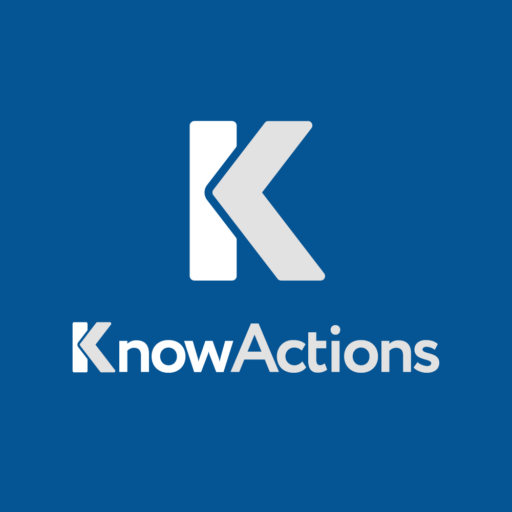Did you know that 71% of professionals feel unproductive during meetings? This fact underscores the importance of effective meeting action items in enhancing productivity and achieving results1. In today’s fast-paced business landscape, understanding how to create and manage action items is key to success.
Meeting action items are pivotal for project advancement, representing clear, actionable tasks derived from discussions. They consist of three essential elements: the task at hand, the person accountable, and the deadline1. A strong system for tracking and managing these items can significantly boost meeting productivity and task management efficiency.
Effective action items offer a clear vision, promote accountability, and improve collaboration and communication within teams1. They serve as a roadmap, guiding projects towards their objectives while ensuring everyone remains aligned and focused on their tasks.
To craft impactful action items, specificity, measurable goals, and realistic deadlines are vital12. By incorporating these items into platforms like Asana, Todoist, or Trello, teams can streamline their task management and enhance efficiency2.
This guide will delve into the best practices for developing, tracking, and executing meeting action items. We’ll discuss their components and how to leverage project management software for the best outcomes3.
Key Takeaways
- Action items boost meeting productivity and drive results
- Effective items include what, who, and when components
- Clear action items enhance accountability and task completion
- Integrating items with project management tools improves efficiency
- Specific, measurable goals and realistic deadlines are crucial
- Regular tracking and updates ensure successful implementation
Understanding Meeting Action Items
Meeting action items are crucial for effective team collaboration. They are clear, actionable tasks that come from meeting discussions. These tasks drive progress and ensure accountability.
Definition and Importance
Action items are tasks assigned during meetings with clear deadlines and assigned parties. They provide clarity, focus, and direction to teams, reducing confusion and boosting momentum4. Effective action items have a clear goal, a designated person, and a deadline. This turns vague tasks into specific, achievable steps4.
Components of Effective Action Items
Effective action items are specific, assignable, measurable, and time-bound5. A good action item tracker should include details like task description, assignee, due date, priority level, creation date, completion date, category, status, and notes6.
| Component | Description |
|---|---|
| Task Description | Clear and concise explanation of the task |
| Assignee | Person responsible for completing the task |
| Due Date | Deadline for task completion |
| Priority Level | Importance of the task relative to others |
| Status | Current state of the task (e.g., in progress, completed) |
Role in Meeting Productivity
Action items are vital for team productivity. They make tasks clearer, more manageable, and focused. This increases accountability and reduces social loafing4. Setting realistic deadlines creates urgency and helps in prioritizing tasks, enhancing meeting productivity4.
Using technology like automated tools can greatly help in tracking action items. This ensures clarity and accountability among team members5. Regular updates on action item progress are key for project success and improving team communication4.
The Anatomy of a Perfect Action Item
A well-crafted action item is crucial for effective Task Management. It enhances Project Coordination and ensures clear Responsibility Tracking. The ideal action item includes several key elements that boost team productivity and project success.
An ideal action item starts with a clear, concise task description. This description must be unambiguous, ensuring team members know exactly what to do. The ‘why’ behind the action is also vital, providing context and motivation for completion.
Setting a realistic due date is essential for project progress. This deadline should be achievable yet challenging, keeping team members motivated. Assigning responsibility to a specific person or team is crucial for accountability, ensuring the task is completed.
- Clear and concise task description
- Purpose or ‘why’ behind the action
- Realistic due date
- Assigned responsibility
- Necessary resources or contact information
Adding these elements to your action items can greatly improve meeting productivity. A well-designed meeting notes template can save 15-20 minutes per meeting during clean-up work7. This highlights the importance of structured action items in efficient Task Management.
For optimal Project Coordination, include any necessary resources or contact information for task completion. This proactive approach reduces delays and empowers team members to work independently.
| Action Item Component | Purpose | Impact on Project |
|---|---|---|
| Task Description | Clarity and Direction | Reduces Misunderstandings |
| Purpose | Context and Motivation | Increases Engagement |
| Due Date | Timeline Management | Ensures Timely Completion |
| Responsibility Assignment | Accountability | Improves Task Ownership |
| Resource Information | Support and Guidance | Facilitates Smooth Execution |
By focusing on these key components, teams can create action items that eliminate ambiguity, foster accountability, and drive progress towards project goals. This structured approach to Responsibility Tracking ensures every team member understands their role and the impact of their contributions to project success.
Creating Clear and Concise Action Items
Effective action items are key for Meeting Action Tracking and Task Management. They need clear objectives, realistic deadlines, and proper responsibility assignment. This ensures successful Team Productivity.
Specific and Measurable Objectives
Action items must meet the SMART criteria: Specific, Measurable, Achievable, Relevant, and Time-bound8. This method improves focus and sets clear expectations. Instead of “Research project management tools,” aim for “Compile a list of five potential project management software vendors by Friday.” Breaking tasks into smaller parts increases the chance of finishing them910.
Setting Realistic Deadlines
Setting achievable due dates is crucial for keeping progress and avoiding team overwhelm10. Consider the task’s complexity and the team’s capacity when setting deadlines. Regularly reviewing and adjusting due dates keeps team morale and productivity high10.
Assigning Responsibility
Task ownership is key for accountability and efficient completion10. Assign specific individuals or teams to each action item, aligning tasks with their strengths. This approach boosts ownership and improves team performance.
| Action Item Component | Description | Importance |
|---|---|---|
| Title | Short, simple, straight to the point | Summarizes the task |
| Description | Clear, concise, with sufficient detail | Provides necessary context |
| Owner | Assigned individual or team | Ensures accountability |
| Deadline | Realistic due date | Maintains progress |
| Priority | High, Medium, or Low | Guides task focus |
By using these strategies, teams can develop clear and concise action items. These drive project success and enhance overall productivity.
Meeting Action Tracking: Tools and Techniques
Effective meeting action tracking is key for team productivity and project success. Digital systems and collaboration tools make it easier to document, assign, and monitor tasks11.
Digital Tracking Systems
Modern digital tracking systems provide powerful features for Meeting Action Tracking. These platforms help teams set specific, measurable action items with clear deadlines. This approach promotes accountability and goal-oriented behavior1112.
![]()
Collaborative Platforms for Action Item Management
Tools like Fellow improve team coordination by centralizing meeting tasks. They enable real-time updates, priority setting, and progress visualization. This enhances overall Project Coordination11.
Integrating Action Items with Project Management Tools
Integrating action items with project management tools creates a structured workflow. This integration offers visibility into team workload, aids in planning, and ensures ongoing communication about task priorities1112.
| Feature | Benefit |
|---|---|
| Task Description | Clarity and specificity |
| Deadline Setting | Time management |
| Task Owner Assignment | Accountability |
| Priority Level | Efficient resource allocation |
| Progress Monitoring | Timely issue identification |
By using these tools and techniques, teams can greatly increase productivity, ensure tasks are completed, and maintain a smooth project flow12.
Prioritizing Action Items for Maximum Impact
Effective Task Management relies on prioritizing action items for maximum impact. Meetings often produce a plethora of tasks needing follow-up. It’s essential to sort them by urgency and importance13. A prioritization matrix serves as a valuable tool, aiding teams in categorizing tasks into four quadrants: do first, schedule, delegate, and eliminate13.
Many might be inclined to start with simpler tasks, but research suggests this can create a misleading sense of progress. Instead, focusing on high-effort tasks early can significantly boost productivity14. This approach is supported by the fact that only about 2.5% of people can truly multitask effectively, highlighting the importance of concentrated effort on critical tasks14.
Enhancing Team Productivity can be greatly aided by using collaborative platforms for tracking meeting actions. Tools like Teamwork.com allow teams to manage tasks efficiently, ensuring nothing is overlooked14. Regularly reviewing and adjusting priorities is crucial, as it’s a continuous process that aids in achieving goals more swiftly13.
| Priority Level | Characteristics | Action |
|---|---|---|
| High | Urgent and important | Do immediately |
| Medium | Important but not urgent | Schedule |
| Low | Urgent but not important | Delegate if possible |
| Lowest | Neither urgent nor important | Eliminate or postpone |
By adopting these prioritization strategies and utilizing the right tools, teams can notably enhance their Task Management processes. This leads to increased Team Productivity and ensures effective Meeting Action Tracking.
Effective Delegation of Action Items
Delegating action items effectively is vital for boosting team productivity and managing tasks efficiently. It means assigning tasks to team members based on their strengths and ensuring they have the support needed to excel.
Matching Tasks to Team Members’ Strengths
Knowing your team’s capabilities is the cornerstone of effective delegation. By aligning tasks with individual strengths, you can significantly enhance team productivity and performance. Managers should invest time in identifying tasks that can be delegated and pairing them with team members who have the requisite skills15.
Communicating Expectations Clearly
Clear communication is paramount when delegating tasks. It’s crucial to provide context and guidance to team members taking on new responsibilities. Explain the rationale behind each assignment and set clear visions for desired outcomes. This method aids in tracking responsibility and ensures everyone grasps their role in achieving team objectives15.
Providing Necessary Resources and Support
To ensure successful task management, equip team members with the resources they need to fulfill their assigned tasks. This could entail investing in training, offering guidance, or utilizing management tools to monitor progress. Forward-thinking companies leverage sophisticated software for managing and tracking action items, which can notably enhance meeting effectiveness16.
| Delegation Benefits | Implementation Strategies |
|---|---|
| Prevents burnout and overwork | Identify tasks suitable for delegation |
| Maximizes personal productivity | Match tasks to team members’ strengths |
| Enhances team skills | Provide clear instructions and context |
| Improves time management | Offer necessary resources and support |
By adopting these strategies, managers can adeptly delegate action items, leading to enhanced team productivity and more streamlined task management. Remember, successful delegation is a skill that demands practice and continuous improvement15.
Following Up on Action Items
Effective follow-ups are essential for Meeting Follow-ups and Responsibility Tracking. Sending meeting minutes within 24 hours keeps the information fresh and accurate17. This ensures a solid foundation for the successful implementation of action items.
To enhance Team Productivity, leverage real-time visibility tools. These tools offer instant updates and promote accountability among team members18. Implementing action items during meetings significantly improves in-team alignment19.
Daily standups or automated reminders ensure action items remain on everyone’s radar18. This method reduces unnecessary communication by setting clear expectations. It leads to less time wasted and fewer missed deadlines19.
Assigning task owners for action items diminishes confusion and enhances task completion rates19. Clear deadlines instill a sense of urgency, thereby boosting efficiency in task completion19.
| Follow-up Method | Benefit |
|---|---|
| Daily Standups | Keeps tasks visible |
| Real-time Tools | Instant updates |
| Follow-up Emails | Summarizes key points |
Regularly communicating updates to meeting participants enhances transparency and accountability17. Utilize tools like Slack or Zoom for instant communication with stakeholders about any changes18. This ensures action items and decisions are fully completed and verified.
Overcoming Common Challenges in Action Item Implementation
Effective task management and meeting action tracking are vital for team productivity. Yet, implementing action items often encounters obstacles. Let’s delve into common challenges and strategies to surmount them.
Dealing with Overdue Tasks
Overdue tasks can significantly disrupt project timelines. Research has pinpointed 13 types of meeting challenges, each with a solution to enhance effectiveness20. To tackle this, ensure accountability by assigning clear action items with designated ownership20. Regular check-ins and open dialogue can pinpoint delays early, facilitating timely corrective actions.
Managing Conflicting Priorities
When team members handle multiple responsibilities, priorities may conflict. Breaking down large topics into several meetings aids in maintaining focus20. Moreover, evaluating the need for meetings helps prioritize deep work, ensuring crucial tasks are not overlooked20.

Addressing Lack of Clarity or Commitment
Vague goals or objectives and disorganized agendas are prevalent meeting challenges that hinder productivity21. To counteract this, distributing agendas beforehand boosts participant engagement20. Setting clear guidelines for KPI reporting ensures progress tracking and maintains clarity20.
| Challenge | Solution |
|---|---|
| Overdue Tasks | Assign clear ownership, regular check-ins |
| Conflicting Priorities | Break topics into multiple meetings, assess meeting necessity |
| Lack of Clarity | Send agendas in advance, establish KPI reporting guidelines |
By directly addressing these challenges, teams can refine their task management processes, enhance meeting action tracking, and significantly boost productivity. Remember, the successful implementation of action items is crucial for project success.
Leveraging Action Items for Continuous Improvement
Action items are crucial for driving continuous improvement within organizations. They help teams track completed tasks, pinpoint areas for enhancement, and increase productivity. Effective tracking of action items boosts meeting productivity and promotes accountability among team members22.
Examining recurring action items reveals systemic issues that require attention. This analysis can lead to better meeting structures, more efficient task allocation, and higher team productivity. Moreover, tracking action items enhances meeting outcomes by making it easier to monitor progress22.
To fully benefit from action items, consider these strategies:
- Encourage team feedback on the action item process
- Regularly review the effectiveness of action items in achieving project goals
- Incorporate lessons learned into future planning and strategy development
Meeting Action Tracking is vital for team growth. Retrospective meetings are essential for continuous improvement, focusing on identifying patterns and action items23. It’s advisable to limit action items to 3 per month to keep focus and avoid demotivation23.
Project Coordination benefits from the strategic use of action items. Discussing and resolving action items during retrospective meetings fosters collaboration and team bonding23. This approach is in line with smart productivity tools that streamline task management and increase efficiency.
| Action Item Category | Resolution Method |
|---|---|
| Ongoing/Reminder | Review in subsequent retrospectives |
| One-off | Link to tracking tools |
| Both | Set reminders for progress checks |
In Agile frameworks like SAFe, Nexus, and LeSS, retrospective meetings address cross-functional dependencies and strategic goals at various organizational levels24. Engaging activities such as icebreakers and brainstorming sessions can boost creativity and foster collaboration during these meetings24.
By effectively utilizing action items, teams can drive continuous improvement, enhance Project Coordination, and increase Team Productivity. Regular reflection on progress and achievements highlights growth and motivates further improvement efforts.
Integrating Action Items with Agile Methodologies
Agile methodologies divide projects into phases, fostering transparency, collaboration, and flexibility. By integrating action items with Agile, project coordination and tracking of meeting actions improve25.
Aligning Action Items with Sprint Goals
In Agile frameworks, like Scrum, teams operate in sprints, lasting two to four weeks. Action items ensure everyone understands their roles and aligns with sprint goals2526.
Using Action Items in Daily Stand-ups
Daily stand-ups, crucial in Scrum, benefit from action item integration. These meetings help track progress, highlight obstacles, and keep focus on sprint goals25.
Incorporating Action Items in Retrospectives
Sprint retrospectives are ideal for evaluating action item success. Teams review completed tasks, assess their impact, and pinpoint areas for process enhancement25.
| Agile Component | Action Item Integration | Benefits |
|---|---|---|
| Sprint Planning | Create and assign action items | Clear task ownership and priorities |
| Daily Stand-ups | Review and update action items | Improved transparency and progress tracking |
| Sprint Review | Evaluate completed action items | Measure sprint success and stakeholder value |
| Retrospective | Analyze action item process | Continuous improvement in task management |
Tools like Workast provide due date alerts, Kanban boards, and custom workflows for efficient Agile management. These tools facilitate effective backlog management, sprint planning, and execution monitoring, boosting project coordination and action tracking25.
Measuring the Success of Action Item Processes
Evaluating the effectiveness of action item processes is vital for improving Task Management and Team Productivity. By tracking key metrics, teams can refine their Meeting Action Tracking systems, leading to better outcomes. A thorough approach to measurement involves examining various aspects of the action item lifecycle.
Timeliness is a key metric. Teams should ensure meetings start and end on time, with any delay over 5 minutes noted. Tracking attendance, including late arrivals and early departures, sheds light on team engagement27. Moreover, evaluating time spent on agenda items reveals areas for meeting efficiency improvement27.
Metrics such as action item generation and completion rates are pivotal for measuring meeting productivity. Counting the number of action items created in each meeting and tracking those closed since the last session is crucial27. This data showcases the team’s commitment to fulfilling tasks and making progress.
Experts stress the importance of tracking systems for ensuring effective follow-up actions in project management28. A tool to monitor progress and status of each action post-meeting is essential for accountability and driving results28.
To enhance evaluation, assign clear roles and responsibilities for action item follow-ups28. Regular communication and check-ins are crucial to gauge the impact of completed tasks on project goals28. By consistently reviewing these metrics, teams can improve their action item processes and increase productivity.
Conclusion
Effective meeting action tracking is vital for boosting team productivity and managing tasks efficiently. The significance of detailed meeting summaries cannot be overstated. Companies that regularly produce and share these summaries with stakeholders see an 80% improvement in understanding meeting outcomes and assigned tasks29.
Action items are the core of productive meetings. By including clear details such as tasks, deadlines, and responsible team members in 62% of meeting summaries, organizations ensure accountability and progress29. This method helps track progress by serving as a benchmark to review decisions, milestone achievements, and follow up on action items in regular meetings30.
To maximize efficiency, 86% of companies designate either the meeting host or a specifically assigned person to create meeting summaries29. Using prebuilt templates for meeting notes can save time, ensure uniformity, and organize vital information across all industries30. By mastering action item management, teams can drive project success and boost overall organizational efficiency.




